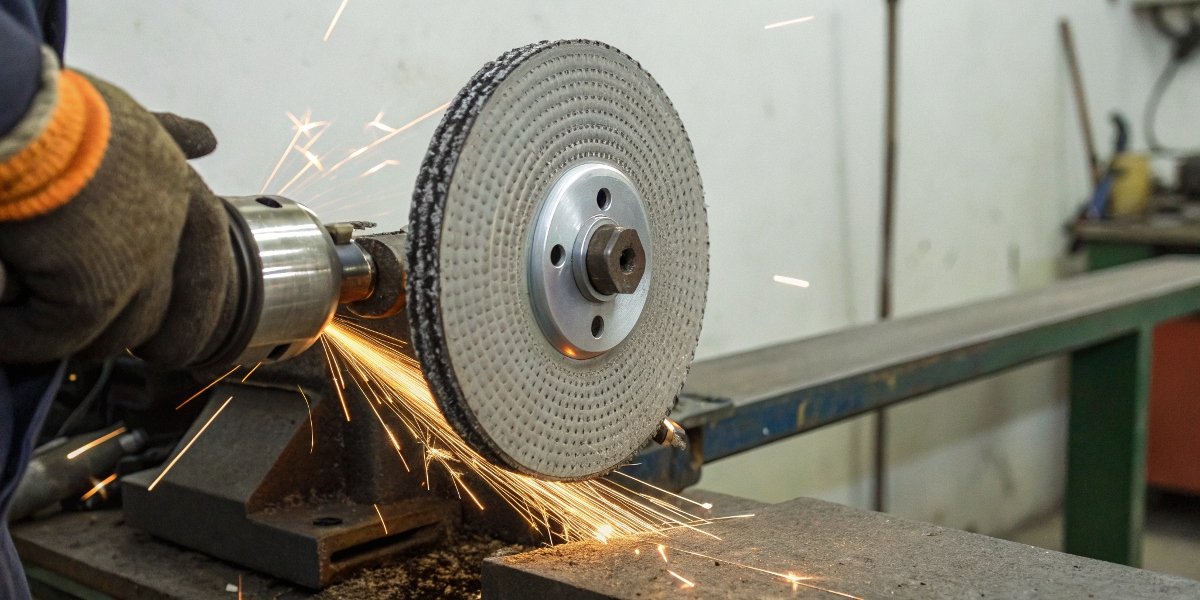
What is the best grinding wheel for cutting aluminum alloys?
Struggling to cut aluminum without your grinding wheels clogging up? This common problem wastes time, ruins your workpiece, and drives up costs, turning a simple job into a frustrating mess.
The best grinding wheel for cutting aluminum alloys is a resin-bonded diamond grinding wheel. Its special resin bond resists clogging from aluminum’s sticky nature, and the super-hard diamond abrasive ensures high cutting efficiency, a long lifespan, and a superior finish.
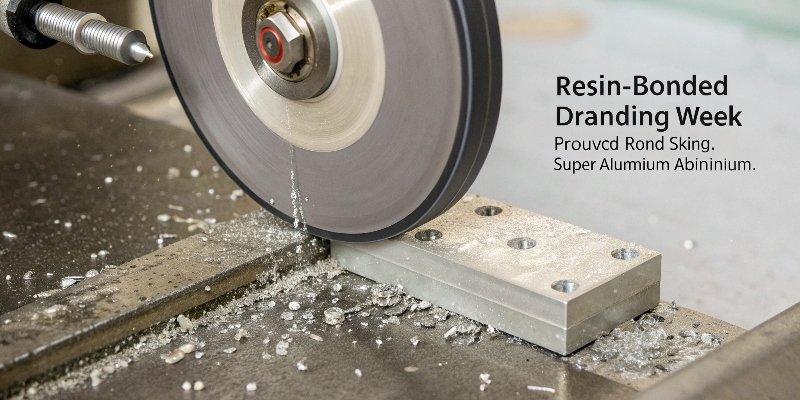
Choosing the right wheel is the difference between a productive day and a pile of ruined materials. I’ve seen it countless times in my nearly three decades of manufacturing grinding tools here in Henan. A customer comes to us frustrated because their standard wheels just can’t handle aluminum. They think the material is the problem, but it’s really the tool. The one-sentence answer above is a great start, but there’s more to understand about why this specific wheel works so well and what your other options are. Let’s dig deeper to make sure you get the perfect cut every single time.
What type of cutting disc is best for aluminum?
Picking a cutting disc for aluminum can feel like a gamble, can’t it? The wrong choice leads to gummy, messy cuts and quickly destroyed discs. But getting it right makes it a smooth operation.
For cutting aluminum, a resin-bonded diamond cutting disc is the top choice. It prevents the clogging, or "loading," that plagues standard discs. This results in cleaner cuts and a much longer tool lifespan. A silicon carbide wheel is also a viable, more common option.
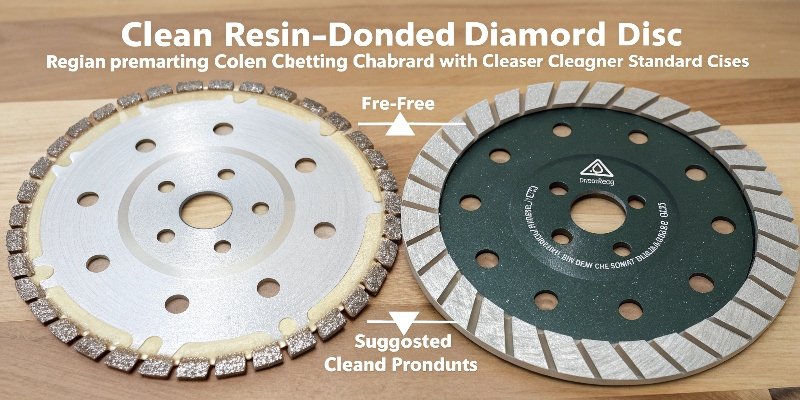
When we talk about the "best" disc, we’re talking about performance, lifespan, and overall value. From my experience, nothing beats a resin-bonded diamond wheel for this job. Aluminum is soft and has a low melting point, which causes it to smear and stick to a cutting disc. Our resin bonds are specifically formulated to wear away at a controlled rate. This process, known as self-sharpening1, constantly exposes fresh, sharp diamond particles, so the wheel keeps cutting cleanly without getting clogged.
The main alternative is a silicon carbide (SiC) disc, often marked "for non-ferrous metals2." These work because silicon carbide is a very hard and sharp abrasive. However, they don’t have the same level of clog resistance or the incredible lifespan of a diamond wheel. For high-volume, precision work, the initial investment in diamond pays for itself quickly.
Comparison: Diamond vs. Silicon Carbide for Aluminum
| Feature | Resin-Bonded Diamond Wheel | Silicon Carbide (SiC) Wheel |
|---|---|---|
| Clogging Resistance | Excellent; self-sharpening action | Good, but can still load up |
| Lifespan | Extremely long | Moderate to short |
| Cutting Speed | Very high | High |
| Heat Generation | Low; reduces material warping | Moderate; risk of overheating |
| Cost | Higher initial investment | Lower initial cost |
| Best For | High-production, precision jobs | General purpose, lower volume tasks |
Why does aluminum clog standard grinding wheels?
Have you ever had a brand-new grinding wheel become useless after just one cut on aluminum? It’s incredibly frustrating when the wheel "loads up," stops cutting, and just smears the metal.
Aluminum clogs standard wheels because it’s soft and has a low melting point. The friction from grinding generates heat, which melts tiny aluminum particles. These melted particles smear and weld themselves into the gaps on the wheel’s surface, a problem known as "loading."
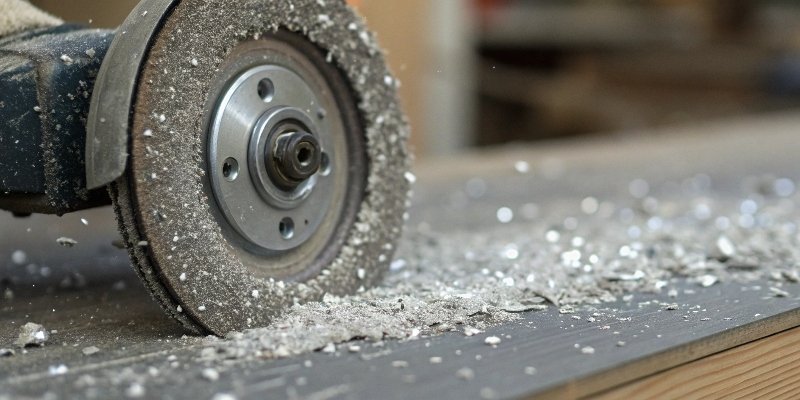
This "loading" phenomenon is the number one enemy when working with aluminum. Here in our factory, we spend a lot of time engineering solutions to fight it. Standard grinding wheels, like those made from aluminum oxide3, are designed for hard, ferrous metals like steel. They are designed to fracture the metal into small chips. But aluminum behaves differently. Its melting point is only around 660°C (1220°F), and the intense, localized heat from a standard grinding wheel easily surpasses that.
Instead of chipping away, the aluminum surface becomes soft and gummy. It gets smeared across the face of the wheel, filling the tiny pores between the abrasive grains. Once these spaces are filled, the sharp grains can no longer make contact with the workpiece. The wheel stops cutting. At this point, it’s just rubbing against the material, which generates even more friction and heat. This can warp your aluminum part, ruin the finish, and create a significant safety hazard. That’s why using a wheel designed to run cool and resist loading is not just for performance, it’s for safety and quality.
Are there specific grinding wheels made for non-ferrous metals?
You know you need a specific wheel for aluminum, but the store shelves are full of confusing options. Choosing the wrong one gets you right back to the frustrating problem of a clogged, useless wheel.
Yes, there are grinding wheels made specifically for non-ferrous metals like aluminum, brass, and copper. These are typically made with a silicon carbide abrasive, identified by the letter ‘C’ in their product code, and feature a softer bond to prevent loading.
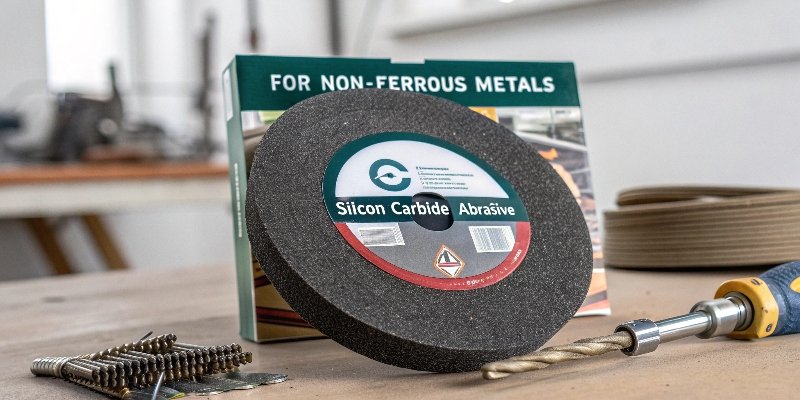
Finding the right wheel is easy once you know what to look for. For decades, the industry standard for non-ferrous metals has been the silicon carbide (SiC) wheel. It’s a great all-around performer and a definite step up from a standard aluminum oxide wheel. When you’re looking at wheels, you can use the industry’s grading system to help you.
Understanding Wheel Specifications
- Abrasive Type: Look for the letter ‘C’ at the beginning of the grade. ‘C’ stands for silicon carbide. The letter ‘A’ stands for aluminum oxide, which is what you want to avoid for this task.
- Grit Size: A coarser grit, like a number from 24 to 46, works well. The larger gaps between the abrasive particles help clear away the soft aluminum chips and reduce the chances of loading.
- Bond Hardness: Look for a softer bond, usually represented by a letter from ‘G’ to ‘L’. A soft bond is crucial. It allows the wheel to break down slightly during use, releasing dull, loaded grains and exposing fresh, sharp ones.
While these SiC wheels are a good, widely available solution, they are still a compromise compared to the ultimate tool. This is where resin-bonded diamond wheels, like our RL brand wheels, come in as the premium solution. They take all the principles of a good aluminum wheel—a sharp abrasive and a clog-resistant bond—to the highest level.
How can you safely cut aluminum with an angle grinder?
Using an angle grinder on aluminum can feel unpredictable and dangerous. The tool can kick back unexpectedly, and the hot metal chips flying around are a real safety concern.
To safely cut aluminum with an angle grinder, you must use a cutting disc specifically made for aluminum, like a silicon carbide or a diamond wheel. Always wear full personal protective equipment (PPE), clamp the workpiece securely, and maintain a firm grip on the grinder.
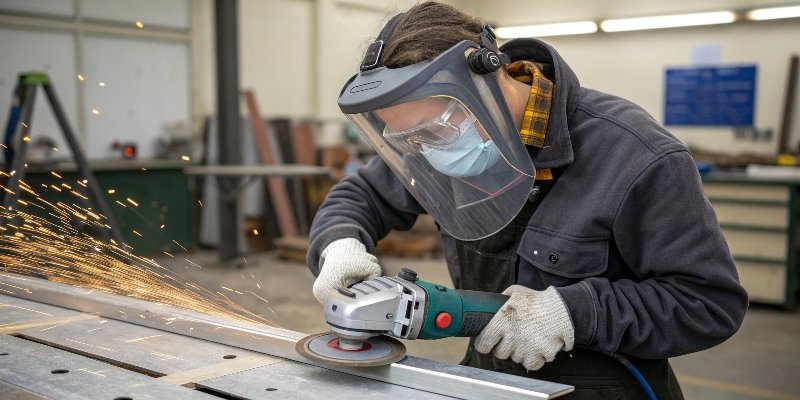
Safety is not negotiable. As a factory owner, it’s my top priority, and it should be yours too. Aluminum presents unique challenges, but they are all manageable if you follow the right procedures. An angle grinder4 is a powerful tool, and respecting that power is the first step to using it safely. Before you even plug it in, go through this checklist.
Safety First Checklist
- Use the Right Disc: I can’t say this enough. Never use a standard metal cutting or grinding wheel meant for steel. It will load up, overheat, and could shatter. Use only discs marked for aluminum, non-ferrous metals, or a specialized diamond blade.
- Wear a Full Face Shield: Safety glasses are a minimum, but a full shield is better. Aluminum chips are light, hot, and can fly in unpredictable directions. Protect your entire face.
- Protect Your Body: Wear thick gloves to protect from sharp edges and hot material. Long sleeves made from flame-resistant material are also essential to protect your arms from hot chips.
- Clamp Your Workpiece: Never try to hold a piece of aluminum with your hand while cutting it. It must be clamped firmly to a stable workbench. The most common cause of dangerous kickback is the workpiece moving and catching the blade.
- Let the Tool Work: Do not press down hard. Applying too much force is counterproductive. It generates more heat, increases loading, and puts you at a higher risk of losing control. Let the speed of the wheel do the cutting.
- Ensure Good Ventilation: Aluminum dust is not something you want to breathe. Work in a well-ventilated area or use a dust extraction system to keep the air clear.
Conclusion
For clean, efficient, and safe aluminum cutting, a resin-bonded diamond wheel is the best investment. It outperforms all other options by preventing clogging, cutting cool, and ensuring a remarkably long tool life.
-
Understand the self-sharpening mechanism that enhances the performance of grinding wheels. ↩
-
Learn about non-ferrous metals and the specific tools required for cutting them. ↩
-
Learn why aluminum oxide wheels are not ideal for aluminum cutting and what alternatives exist. ↩
-
Get essential safety tips and best practices for using an angle grinder on aluminum. ↩
Written by
leeon
You may also be interested in:
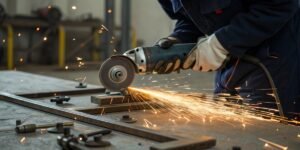
How do you cut bolts with an angle grinder?
Struggling to make a clean cut on a stubborn bolt? Using an angle grinder can feel intimidating, but it is a fast and effective method
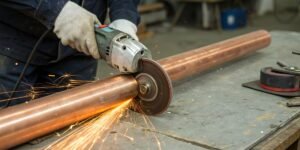
Can I use an angle grinder to cut a copper pipe?
Struggling with a quick copper pipe cut? Worried about damaging the material? An angle grinder is a fast solution, but using it wrong can be
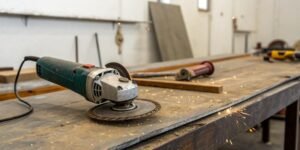
Can an angle grinder cut meat and bones?
Struggling to cut tough bones? Thinking of grabbing your angle grinder for a quick solution? This powerful tool seems like an easy answer, but it’s
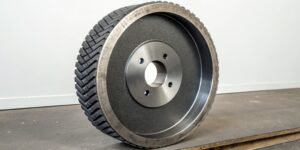
What's the application of CBN Wheels?
Struggling with grinding hard steels? Frequent wheel changes and poor finishes can hurt your bottom line. We have found that CBN wheels provide the durability
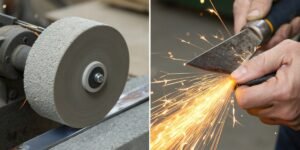
What is the difference between grinding and honing a blade?
A dull blade is a frustrating problem. It slows down production and ruins your workpiece. Using the wrong technique to fix it can cause permanent
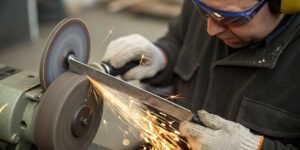
How to sharpen a knife on a bench grinder?
Is your dull knife slowing you down? A bench grinder seems like a quick fix, but you’re worried about ruining the blade. You need a
